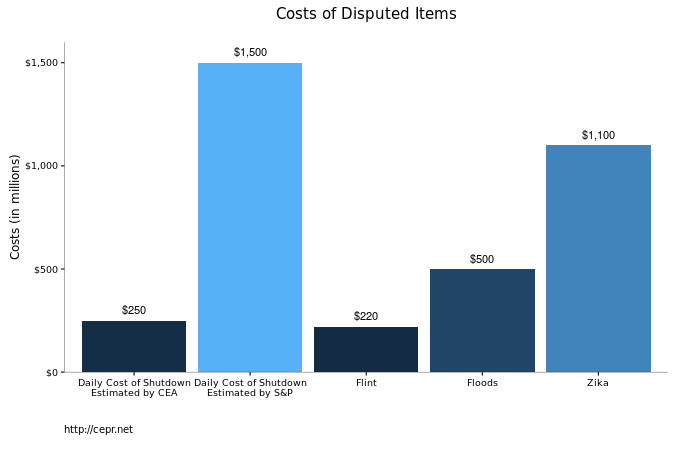September 28, 2016
In 2013, Congress failed to pass continuing a resolution to fund the government by the end of the fiscal year, leading to a 16-day shutdown of the government. During these 16 days, all routine government functions were interrupted, leading to the furlough of federal government employees and contract workers and the closing of federal agencies and national parks.
This disruption had a considerable economic cost. While estimates on the exact price tag of the shutdown differ, they range from an optimistic estimate of $2 to $6 billion by the Council of Economic Advisors, to an estimated loss of $24 billion by Standard & Poor’s. Furthermore, the Council of Economic Advisors claims about 120,000 jobs were not added to the economy in October due to the shutdown.
The government again seems to be at risk of a new shutdown this fall. Congress is working to approve a Continuing Resolution (CR) to fund the government by the end of the year. If the CR is not approved by the end of this week, the government will be forced to shut down. Media reports point to funding for the Zika epidemic, the floods in Louisiana, and the Flint water crisis as the main culprits in the failure to reach an agreement.
Figure 1 illustrates the cost for the items mentioned, alongside with the daily price for shutting down the government according to the most optimistic and pessimistic approximations. The loss to the economy from even a short shutdown is likely to be far larger than the sums of money currently in dispute.







